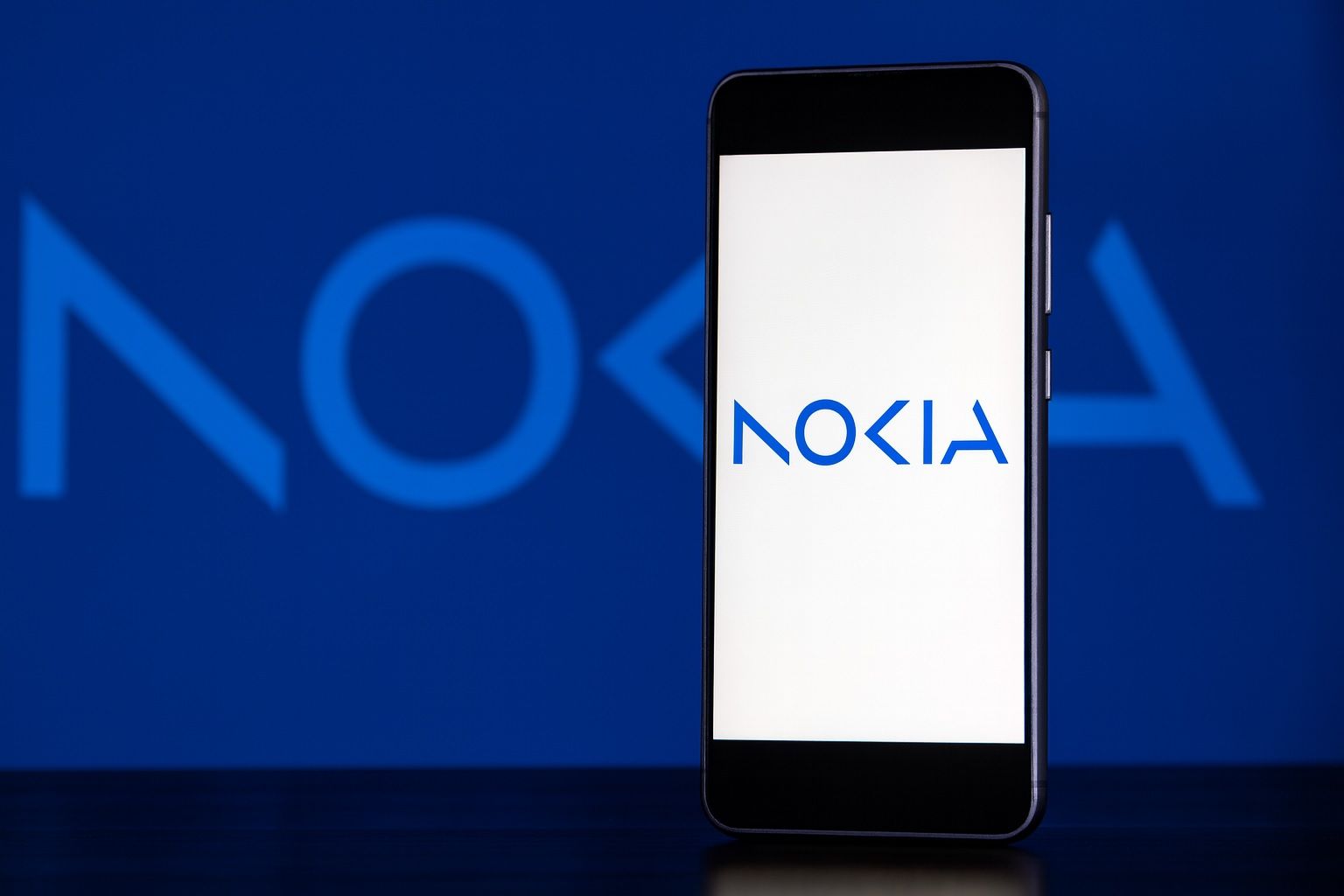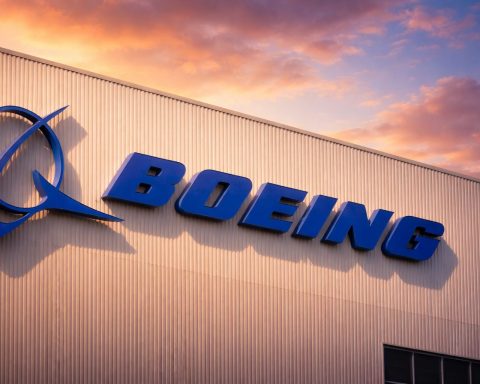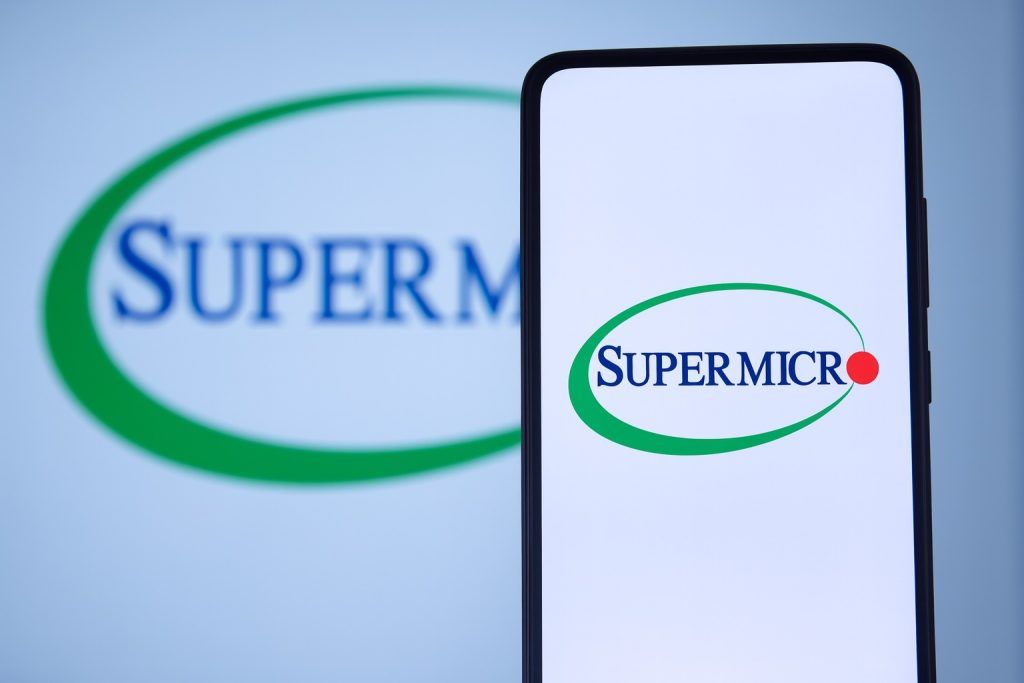Nokia Oyj’s stock surged on Thursday, October 23, 2025, propelled by strong quarterly results and a flurry of 5G contract wins. The Finnish telecom equipment maker’s New York–listed shares jumped sharply as investors digested better-than-expected earnings and optimistic signals about future growth. Below are the key facts and analysis of Nokia’s recent performance:
- Surging Share Price: Nokia’s U.S. shares climbed about 10% by midday Oct. 23, reaching around $6.10 – the stock’s highest level in over three years [1]. In Europe, Helsinki-listed Nokia stock rose ~8% to about €5.20, adding roughly $3.5 billion to the company’s market value [2].
- Earnings Beat Expectations:Q3 2025 results beat forecasts – Nokia reported an operating profit of €435 million for the quarter (vs. ~€342 million expected) on net sales of €4.83 billion (above the €4.6 billion forecast) [3] [4]. Strength in its optical networks and cloud divisions drove a 12% sales increase, and Nokia raised its full-year profit outlook slightly in response [5] [6].
- 5G Contract Wins: Recent major 5G network deals across the globe have boosted investor optimism. Nokia extended a 5G partnership with Vodafone/Vodacom in Europe and Africa on Oct. 14, and Vodafone’s UK joint venture (Vodafone–Three) awarded Nokia and Ericsson a £2 billion ($2.7 billion) contract to help upgrade ~7,000 sites as part of a nationwide 5G rollout [7] [8]. Nokia also won a “green” 5G network deal with Japan’s Rakuten Mobile – deploying power-saving optical transport tech that cuts energy use ~24% – and expanded a core network upgrade with Finland’s Elisa targeting ~20% energy savings [9].
- Analyst & Market Sentiment: Wall Street is cautiously optimistic on Nokia. Most analysts rate the stock a “Moderate Buy” with 12-month price targets in the $5–$6 range, suggesting modest upside from current levels [10]. Nokia’s recent rally and 5G wins have improved sentiment, but as one analysis noted, “full-year guidance cuts remind that output may lag until late 2025” – meaning the company still needs to prove its strategy will deliver stronger growth ahead [11].
Shares Jump on Earnings Beat and Improved Outlook
Investors cheered Nokia’s third-quarter 2025 earnings report, which handily beat market expectations. The company’s comparable operating profit for Q3 came in at €435 million, far above analyst forecasts of roughly €340 million [12]. Revenue likewise rose to €4.83 billion, about 12% higher than a year ago and topping predictions of ~€4.6 billion [13]. This upside surprise was driven by robust demand in optical networks and cloud services, including new AI-focused data center sales following Nokia’s acquisition of U.S.-based optical firm Infinera [14] [15].
“AI and data center demand continues to be robust. In fact, it continues to accelerate from our perspective,” Nokia CEO Justin Hotard said during a media call, highlighting how cloud and AI customers are contributing to growth [16]. Nokia reported that clients in artificial intelligence and cloud segments now account for 6% of its total sales (and 14% of its network infrastructure revenues), underscoring the company’s strategic pivot toward new tech markets [17] [18].
On the earnings news, Nokia’s stock price leapt. By late morning on Oct. 23, Nokia’s NYSE-traded shares were up roughly 10% to about $6.10 – marking a level not seen since 2022 [19]. Its Helsinki shares likewise hit multi-year highs above €5, with the post-earnings rally adding an estimated €3 billion to Nokia’s market capitalization [20]. This strong market reaction reflected renewed confidence after a challenging period. Earlier in the year, Nokia had issued a profit warning in July amid U.S. tariffs, a weak dollar, and a North American 5G spending slowdown [21]. Now, with a solid third quarter in hand, the company slightly upgraded its 2025 profit guidance – predicting €1.7–2.2 billion in annual operating profit, a minor increase from the prior upper range of €2.1 billion [22] [23]. The guidance tweak is partly due to an accounting change (scaling back some venture investments), but it signals management’s growing confidence that the second half of 2025 will be stronger than the first [24].
5G Deals Fueling Momentum
Nokia’s recent stock surge has also been underpinned by major 5G contract wins announced in the past few weeks. These deals not only promise future revenue but also suggest Nokia is holding its ground (and then some) in key markets despite fierce competition. In mid-October, Nokia unveiled an extension of its 5G network partnership with Vodafone/Vodacom spanning Europe and Africa [25]. Around the same time, the newly merged VodafoneThree (combining Vodafone UK and Three UK) awarded Nokia and rival Ericsson a £2 billion contract to supply 5G equipment for roughly 7,000 sites across the U.K. over the coming decade [26] [27]. This significant British deal marked Nokia’s return as a supplier to Vodafone in the UK and will see Nokia providing radio access and core network gear for a large portion of VodafoneThree’s 5G rollout [28]. It’s a notable win for both Nokia and Ericsson, giving the two Nordic vendors a boost as UK carriers invest in next-generation infrastructure.
Nokia has scored wins in other regions as well. It clinched a contract with Rakuten Mobile in Japan to deploy an energy-efficient 5G network using Nokia’s optical transport technology. This “green” 5G project will leverage Nokia’s DWDM (dense wavelength division multiplexing) optical tech to cut network power consumption by about 24%, helping Rakuten reduce costs and carbon footprint [29]. In Nokia’s home market of Finland, the company expanded a multi-year core network upgrade deal with Elisa, aiming to incorporate 5.5G capabilities while improving energy efficiency ~20% in Elisa’s network operations [30].
These contract wins highlight Nokia’s competitive strengths in network equipment and services – from radio access networks (RAN) to optical transport and core systems. They also reinforce the narrative that Nokia is a key beneficiary as carriers around the world continue building out 5G (and even starting to plan for 5.5G/6G upgrades). The steady drumbeat of deals has clearly been a catalyst for the stock’s rally in October. Nokia’s U.S. share price had already climbed roughly 14% in the first half of October, touching a 52-week high around $5.49 by Oct. 14 [31]. By Oct. 15, it edged up to about $5.54, and in the week before earnings it hit as high as $5.79 intraday [32]. This momentum, fueled by 5G contract announcements and bullish analyst forecasts, set the stage for the additional pop after the earnings beat.
Pivoting Toward AI and New Markets
Under CEO Justin Hotard (who took the helm earlier in 2025), Nokia has been actively refocusing its strategy toward high-growth tech areas like cloud, AI, and even defense communications. A centerpiece of this strategy was Nokia’s $2.3 billion acquisition of Infinera, a U.S.-based optical networking firm, completed earlier this year [33]. The Infinera deal significantly expands Nokia’s capabilities in optical transport networks – critical for data centers and 5G backhaul – and has already started contributing to sales growth. Nokia noted that optical network revenues jumped 19% year-on-year in Q3 (constant currency), reflecting demand from cloud and AI data center clients [34] [35]. Integrating Infinera’s technology is part of Nokia’s broader aim to strengthen its portfolio in areas adjacent to traditional mobile infrastructure.
Nokia is also embedding artificial intelligence into its offerings. In early October, the company announced a partnership with Hewlett Packard Enterprise (HPE) to leverage HPE’s AI-powered RAN automation software for Nokia’s 5G and future 6G networks [36]. Nokia even hired a team of HPE developers as it licenses this AI-driven RAN controller, aiming to automate network optimization and improve efficiency in service delivery [37]. By infusing AI into network management, Nokia hopes to offer carriers smarter, self-optimizing networks – a selling point as telecom operators look to reduce costs and handle complex 5G/6G operations with fewer human interventions.
Beyond telecom, defense and government projects are emerging on Nokia’s radar. With geopolitical tensions high and many NATO-allied countries boosting defense budgets (some targeting up to 5% of GDP on defense), there is growing demand for secure communications networks. Nokia has indicated it sees opportunities here: CEO Hotard has pointed out that increased defense spending on secure networking could open new revenue streams [38] [39]. Nokia’s networking expertise (hardened, encrypted mobile networks, private wireless systems, etc.) could be applied to military and government use cases. In fact, analysts note that expansion into AI and defense sectors is positioning Nokia for more diversified, sustainable growth beyond its core carrier business [40]. By investing in emerging technologies and markets, Nokia aims to offset challenges in its traditional telecom equipment segment and tap into new, higher-margin opportunities.
This strategic pivot appears to be gaining traction. The strong Q3 results and contract pipeline suggest that Nokia’s bets on optical, cloud, and AI are beginning to pay off. The company’s management remains cautious but optimistic – and so far, investors are rewarding the forward-looking investments. Nokia’s balance sheet is also solid (debt-to-equity is modest around 0.2, and it maintains healthy cash flow), giving it the flexibility to continue funding R&D, acquisitions, and its ~3% dividend yield that provides investors some income stability [41]. There has even been speculation that Nokia might streamline by divesting non-core assets – for example, rumors swirled that it could sell off its legacy HERE digital mapping unit – to further focus on networks and new tech initiatives [42]. While that remains unconfirmed, it signals the company’s intent to concentrate on what it sees as its most promising sectors.
Competitive Landscape: Ericsson, Huawei, Qualcomm
Nokia’s resurgence comes amid a complex competitive landscape in the global telecom industry. Its primary rival, Sweden’s Ericsson, has also been performing well recently – in fact, Ericsson reported blowout Q3 results of its own in mid-October, which sent Ericsson’s stock up 13% on Oct. 14 [43]. Ericsson has been beating Nokia in certain markets, especially North America. Notably, U.S. carrier AT&T has been phasing out Nokia’s 5G equipment in favor of Ericsson, after Ericsson snagged a massive $14 billion 5G expansion deal with AT&T back in 2023 [44] [45]. This has allowed Ericsson to expand its share in the lucrative U.S. market, while Nokia felt the pinch earlier this year. Both Nokia and Ericsson have also contended with a general slowdown in telecom spending and headwinds like tariffs in the U.S. [46]. The UK Vodafone contract mentioned earlier was therefore a welcome joint win for the two companies, underscoring that the European vendors are still highly relevant in 5G buildouts outside the U.S.
In China, however, Nokia (and Ericsson) face a different challenge. Reports in recent weeks suggest that China is curbing the use of foreign 5G gear from Nokia and Ericsson in favor of domestic suppliers [47]. Chinese telecom operators, under government policy, are increasingly favoring local champions like Huawei and ZTE for network equipment. This means Nokia’s access to the huge China market is limited, creating a growth headwind. At the same time, Western governments have largely excluded China’s Huawei from 5G rollouts due to security concerns, which has benefited Nokia and Ericsson in Europe, North America and parts of Asia. The result is a bifurcated market: Nokia and Ericsson dominate in many countries outside China, while Huawei dominates inside China (and some allied markets). Huawei, though not publicly traded, remains a formidable competitor technologically – it continues to innovate in 5G/6G and often undercuts on price, which pressures margins for everyone in the industry.
Another tech player in the broader 5G ecosystem is Qualcomm, known for its mobile chipsets and patents. While Qualcomm doesn’t compete directly in network infrastructure, its fortunes reflect the health of the 5G mobile device market. Lately, smartphone demand has been mixed, affecting companies like Qualcomm. For Nokia, the indirect lesson is that overall 5G industry trends are a mixed bag – carrier spending on network gear has been flat or declining in some regions [48], even as demand surges in specific areas like cloud data centers or private networks. This makes diversification important. Nokia’s competition isn’t just the Ericssons and Huaweis of the world, but also the changing priorities of telecom operators and tech ecosystem shifts (for instance, cloud companies building their own networks).
Despite these challenges, Nokia’s recent wins show it can still go head-to-head with Ericsson and others. The two Nordic firms often split big contracts (as seen with VodafoneThree). Both are jockeying to supply 5G upgrades in markets like India, Latin America, and the Middle East as well, where Huawei’s presence may be restricted. Nokia has also fully exited Russia due to sanctions [49], sacrificing that market entirely, but choosing compliance with Western sanctions and focusing elsewhere. All told, competition remains intense, and Nokia will need to continue executing well on technology and costs to maintain its momentum against very strong rivals. The good news is that Nokia’s broad portfolio – spanning mobile RAN, fixed networks, optics, cloud software, and patents – gives it multiple levers to pull in the face of competition.
Analyst Forecasts and Investor Sentiment
The consensus among analysts following Nokia is guarded optimism. Multiple investment banks and research firms have reiterated buy or overweight ratings on Nokia in light of its recent performance. According to MarketBeat data, a majority of analysts (roughly 5–6 out of 8) rate NOK as a “Buy”, with the remainder mostly Holds [50] [51]. The average 12-month price target sits in the mid-$5 range (around $5.30–$5.50), which is actually near the stock’s current trading price after the latest jump [52]. A few analysts are more bullish – for example, BNP Paribas recently upgraded Nokia to “Outperform” with a price target of $5.00 [53] [54] (slightly below where shares trade now, perhaps set before the recent rally). Overall, Wall Street’s targets cluster in the $5 to $6 range [55], implying expectations for only modest upside in the next year. This reflects the view that while Nokia is on a better track, its near-term growth may be somewhat limited by the challenging telecom market conditions.
Importantly, Nokia’s current valuation already prices in some of the good news. The stock is trading at roughly 28× earnings, higher than its historical average, though still below many peers in the tech sector [56]. Some technical indicators also flash caution: for instance, Nokia’s rapid rise pushed its 14-day RSI (Relative Strength Index) well above 70 recently, indicating the stock was overbought in the short term [57]. Market technicians note this could lead to a near-term pullback or consolidation after such a steep climb [58]. Indeed, after spiking post-earnings, it would not be surprising to see Nokia’s share price cool off or trade sideways as investors digest the gains. However, any dips could attract buyers who believe in the longer-term story.
On that front, expert commentary has pointed out both the opportunities and the risks ahead for Nokia. Bulls argue that Nokia’s strong cash position, improving product mix, and strategic moves into AI/cloud should bolster its growth trajectory. The company has a stable underlying business – its large base of telecom customers and a steady services revenue stream – plus a dividend yield (~3%) that provides support for investors [59]. This means even if growth is moderate, shareholders get some return. “Analysts view Nokia’s performance as a clear signal that its investment in emerging technologies is paying off,” one industry report noted, adding that the focus on AI, cloud, and defense “positions the company for sustainable long-term growth.” [60] Nokia’s management has a track record of meeting or beating estimates about 75% of the time in recent years [61], which gives some confidence in their execution.
On the other hand, skeptics highlight challenges such as Nokia’s still-tight margins (operating margin has been hovering in the mid-single digits [62]) and the fact that telecom operators globally remain cautious in their spending. As mentioned, Nokia had to cut its full-year 2025 profit outlook back in July due to macroeconomic headwinds [63]. Although that outlook has now been nudged up slightly, it’s clear the company is not completely out of the woods. “Investor sentiment is cautiously upbeat due to the recent contract wins and cost-cutting initiatives, but full-year guidance cuts remind that output may lag until late 2025,” observed TechStock², underscoring that Nokia still has to prove its reforms will yield faster growth [64]. In other words, Nokia is turning the corner, but it remains a “show me” story for some investors – they want to see the new deals and technologies translate into significantly higher revenue and profit in the coming year.
Outlook: Can Nokia Sustain the Comeback?
As of late October 2025, Nokia has built up considerable momentum. The stock’s strong run over the past month reflects renewed faith in the company’s direction, powered by tangible wins (in contracts and earnings) that back up the optimism. Moving forward, a few key things will determine if Nokia can sustain this comeback:
- Continued Execution: Nokia will need to continue executing on its large contracts (like the VodafoneThree rollout) and converting its pipeline of 5G deals into actual revenue growth. Delivering on promises – and perhaps landing even more deals in 5G, cloud, or defense – will be crucial to keep investors excited.
- Margin Improvement: With cost pressures from inflation and intense competition, improving profit margins will be a focus. Nokia has been cutting costs and streamlining (it even issued new shares this month to fund employee incentives and potential acquisitions [65]). If those measures and higher-margin product sales (optical, software, etc.) start to lift operating margins, it would validate the strategy.
- Market Conditions: Nokia is somewhat at the mercy of carrier spending cycles. A broader pickup in telecom capital expenditure (for example, if operators accelerate 5G/6G upgrades or governments invest in digital infrastructure) would be a tailwind. Conversely, if the current slow capex environment persists or worsens, Nokia’s growth could stay subdued despite its best efforts. The company does benefit from diversification – it can grow in newer areas like cloud, enterprise private networks, or defense even if traditional carrier orders are slow.
- Competition & Innovation: Finally, how Nokia fares against Ericsson, Huawei, and emerging players will be an ongoing battle. The company must keep innovating – whether in power-efficient networks, advanced AI automation, or 6G research – to maintain its edge. Its competitive position in Western markets is strong now (given Huawei’s restrictions), but that advantage could narrow if, say, Open RAN technologies allow new entrants or if geopolitical tides shift.
For now, investors have plenty of reasons to be encouraged. Nokia’s stock is up about 20% over the past month and roughly 12% year-to-date [66], outperforming many peers, and the company just delivered one of its best quarters in years. The combination of hard numbers (earnings beat, raised guidance) and strategic narrative (5G, AI, cloud, defense growth drivers) makes for a compelling story. If Nokia can keep this balance – meeting near-term expectations while building for the future – it may well cement its turnaround and reward shareholders further. As of October 23, 2025, Nokia has given the market a taste of its potential, and the coming quarters will show whether it can fully realize that promise for a sustained comeback.
Sources: Public earnings reports and financial news outlets were used in compiling this report, including Reuters [67] [68], TS2 TechStock² [69] [70], Yahoo Finance/Economic Times [71] [72], and others.
References
1. coincentral.com, 2. coincentral.com, 3. m.economictimes.com, 4. m.economictimes.com, 5. m.economictimes.com, 6. coincentral.com, 7. ts2.tech, 8. www.reuters.com, 9. ts2.tech, 10. ts2.tech, 11. ts2.tech, 12. m.economictimes.com, 13. m.economictimes.com, 14. www.globalbankingandfinance.com, 15. www.globalbankingandfinance.com, 16. m.economictimes.com, 17. www.globalbankingandfinance.com, 18. www.globalbankingandfinance.com, 19. coincentral.com, 20. coincentral.com, 21. www.globalbankingandfinance.com, 22. www.globalbankingandfinance.com, 23. www.globalbankingandfinance.com, 24. www.globalbankingandfinance.com, 25. ts2.tech, 26. ts2.tech, 27. www.reuters.com, 28. www.reuters.com, 29. ts2.tech, 30. ts2.tech, 31. ts2.tech, 32. ts2.tech, 33. ts2.tech, 34. www.globalbankingandfinance.com, 35. www.globalbankingandfinance.com, 36. ts2.tech, 37. ts2.tech, 38. ts2.tech, 39. ts2.tech, 40. coincentral.com, 41. ts2.tech, 42. ts2.tech, 43. ts2.tech, 44. m.economictimes.com, 45. coincentral.com, 46. www.reuters.com, 47. ts2.tech, 48. ts2.tech, 49. ts2.tech, 50. ts2.tech, 51. ts2.tech, 52. ts2.tech, 53. ts2.tech, 54. ts2.tech, 55. ts2.tech, 56. ts2.tech, 57. ts2.tech, 58. ts2.tech, 59. ts2.tech, 60. coincentral.com, 61. ts2.tech, 62. ts2.tech, 63. ts2.tech, 64. ts2.tech, 65. ts2.tech, 66. ts2.tech, 67. www.globalbankingandfinance.com, 68. www.globalbankingandfinance.com, 69. ts2.tech, 70. ts2.tech, 71. m.economictimes.com, 72. m.economictimes.com







